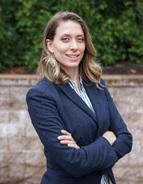On this page:
Description
September 20, 2018, from 1:00 - 2:30 p.m. EDT
The top tier of EPA’s Food Recovery Hierarchy is source reduction, which is reducing the volume of surplus food generated before it becomes a waste to manage. Businesses and organizations can learn to effectively prevent wasted food by taking source reduction steps, such as inventorying supplies, changing processes and buying less. Looking through a Sustainable Materials Management lens, preventing wasted food provides the greatest potential for cost savings and resource conservation relative to the other Food Recovery Hierarchy activities, as demonstrated by the U.S. EPA Waste Reduction Model (WARM). Because source reduction can be challenging to understand, quantify and implement, in this webinar, you will learn about the definition of source reduction, and examples of successful cases of a supermarket, college and elementary school that prevent wasted food at the source. You can find Part 1 of the series here.
![]() Video: Preventing Food Waste Upstream A Source Reduction Approach - Part II Exit
Video: Preventing Food Waste Upstream A Source Reduction Approach - Part II Exit
Speakers
 Janet Whited, San Diego Unified School District
Janet Whited, San Diego Unified School District
Janet Whited is an Environmental Specialist for the San Diego Unified School District. She develops and implements programs to expand recycling and composting opportunities within the district, conducts environmental education and outreach, and has recently helped coordinate the district’s edible food reduction, recovery and rescue program at over 180 schools and district facilities. She has worked for the district in this capacity for over eight years and previously worked in the City of San Diego's Environmental Services Department coordinating residential and commercial recycling programs.
 Pat Ianotti, Price Chopper
Pat Ianotti, Price Chopper
Pat Ianotti is the Director of Retail Operations for Price Chopper/Market 32 with headquarters in Schenectady, N.Y. Pat has worked for Price Chopper for 32 years, holding many different positions during that time, including Store Manager, Manager of Continuous Improvement, Manager of Store Labor and Expense, Regional Merchandiser, and Zone Director. He has a Master of Business Administration from Morehead State University in Kentucky, and now lives in Vermont.
Julianne Stelmaszyk, Boston College
Julianne (Juli) Stelmaszyk is the Manager of Regional and Sustainable Food Systems at Boston College Dining, where she oversees sustainability initiatives and regional sourcing strategies. Prior to working at Boston College, Juli worked as a vegetable farmer, private chef and sustainable food educator throughout Boston, Mass., and Rome, Italy. After completing a culinary apprenticeship at the Rome Sustainable Food Project, she founded a farm-to-table cooking school and established a food, gardens and sustainability program at a boarding school in Italy. She later helped Eataly Boston design a culinary apprenticeship program.
 André Villaseñor, U.S. Environmental Protection Agency, Region 9
André Villaseñor, U.S. Environmental Protection Agency, Region 9
André Villaseñor is the Sustainable Management of Food Coordinator in the U.S. Environmental Protection Agency’s Region 9 Los Angeles Field Office. André began his career fulfilling EPA’s mission to protect human health and the environment in 2005, following his service in the U.S. Peace Corps in Ecuador. He holds an Master of Science from State University of New York at Syracuse and a Master of Arts from Syracuse University.
Slides
You may need a PDF reader to view some of the files on this page. See EPA’s About PDF page to learn more.-
Preventing Food Waste Upstream: A Source Reduction Approach Part II (PDF)(19 pp, 2 MB)
André Villaseñor's presentation slides
-
Love Food Not Waste (PDF)(12 pp, 2 MB)
Janet Whited's presentation slides
-
Source Reduction (PDF)(5 pp, 3 MB)
Pat Ianotti's presentation slides
-
Upstream Food Waste Prevention at Boston College (PDF)(9 pp, 4 MB)
Julianne Stelmaszyk's presentation slides

